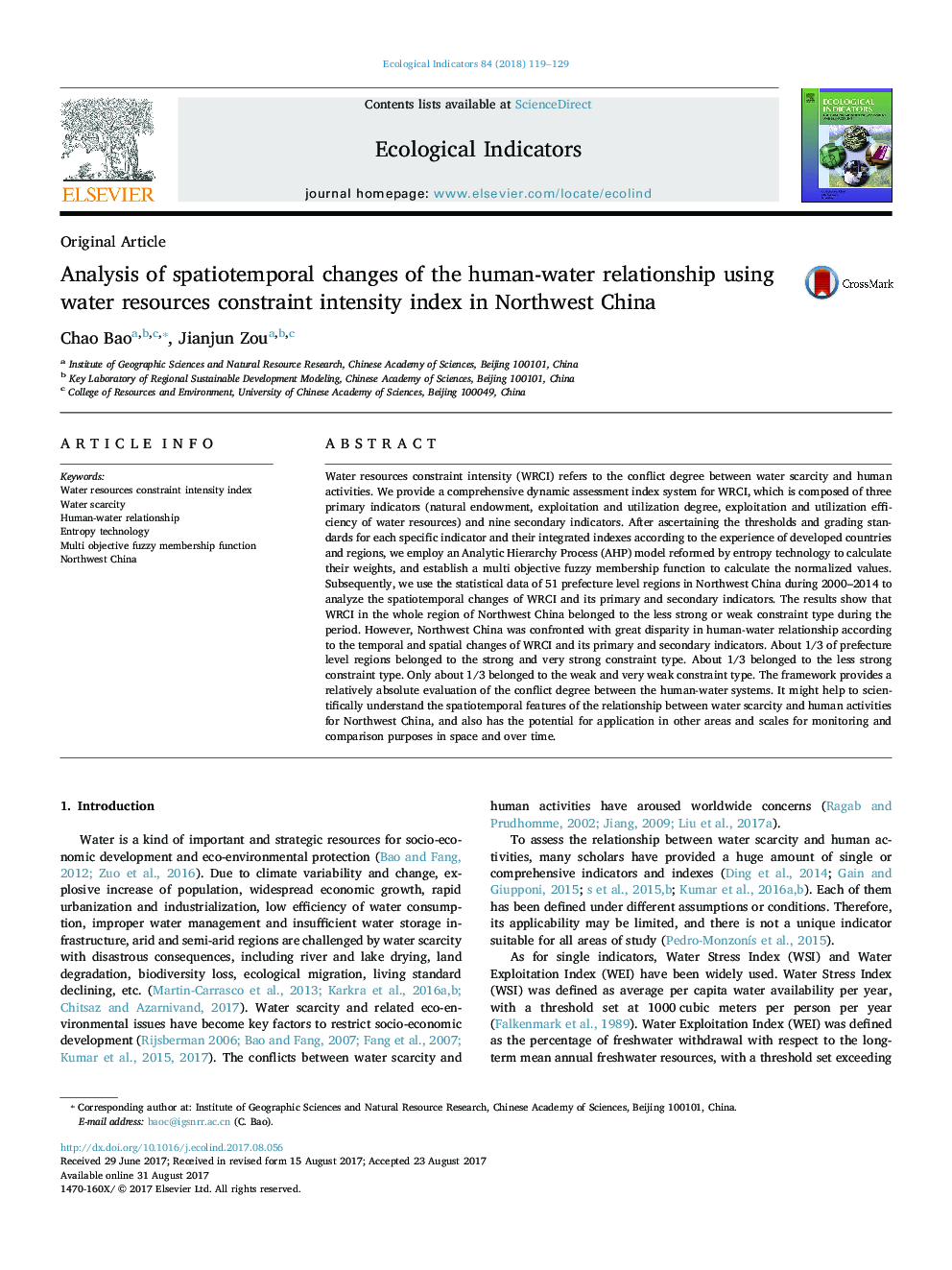| Article ID | Journal | Published Year | Pages | File Type |
|---|---|---|---|---|
| 5741534 | Ecological Indicators | 2018 | 11 Pages |
â¢Water resources constraint intensity index (WRCI) was constructed to reflect the conflict between human-water relationship.â¢An Analytic Hierarchy Process (AHP) model reformed by entropy technology and a multi objective fuzzy membership function were employed for indicator aggregation.â¢The spatiotemporal changes of WRCI in 51 prefecture level regions in Northwest China during 2000-2014 were analyzed.â¢Northwest China fell into the less strong or weak constraint type of WRCI during 2000-2014 and confronted with great disparity in human-water relationship.
Water resources constraint intensity (WRCI) refers to the conflict degree between water scarcity and human activities. We provide a comprehensive dynamic assessment index system for WRCI, which is composed of three primary indicators (natural endowment, exploitation and utilization degree, exploitation and utilization efficiency of water resources) and nine secondary indicators. After ascertaining the thresholds and grading standards for each specific indicator and their integrated indexes according to the experience of developed countries and regions, we employ an Analytic Hierarchy Process (AHP) model reformed by entropy technology to calculate their weights, and establish a multi objective fuzzy membership function to calculate the normalized values. Subsequently, we use the statistical data of 51 prefecture level regions in Northwest China during 2000-2014 to analyze the spatiotemporal changes of WRCI and its primary and secondary indicators. The results show that WRCI in the whole region of Northwest China belonged to the less strong or weak constraint type during the period. However, Northwest China was confronted with great disparity in human-water relationship according to the temporal and spatial changes of WRCI and its primary and secondary indicators. About 1/3 of prefecture level regions belonged to the strong and very strong constraint type. About 1/3 belonged to the less strong constraint type. Only about 1/3 belonged to the weak and very weak constraint type. The framework provides a relatively absolute evaluation of the conflict degree between the human-water systems. It might help to scientifically understand the spatiotemporal features of the relationship between water scarcity and human activities for Northwest China, and also has the potential for application in other areas and scales for monitoring and comparison purposes in space and over time.
